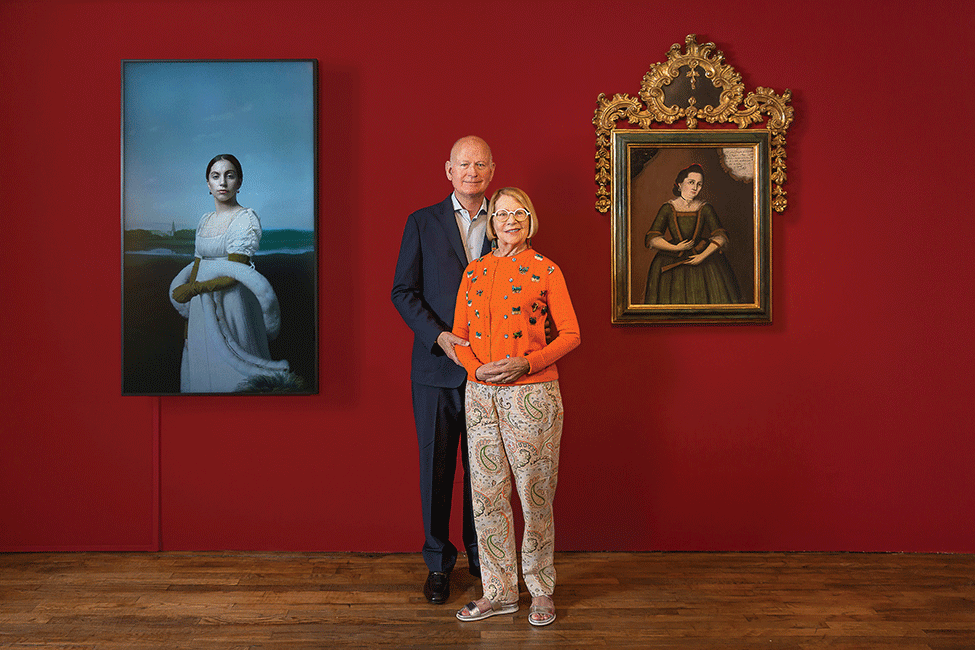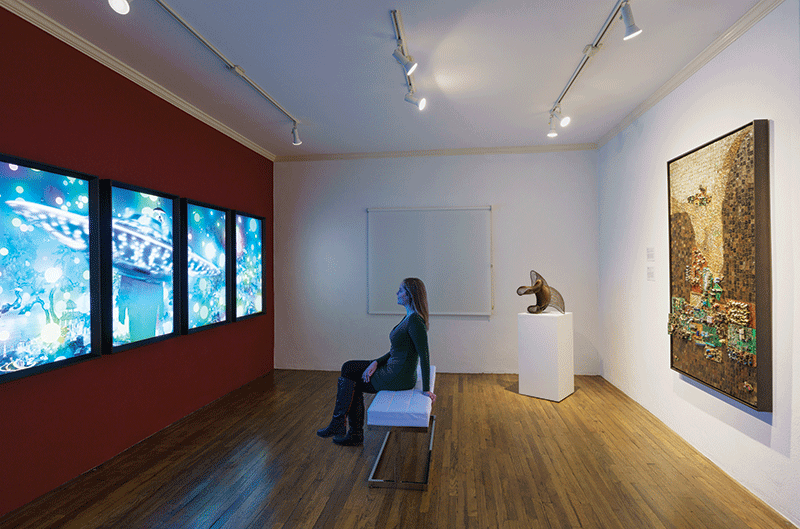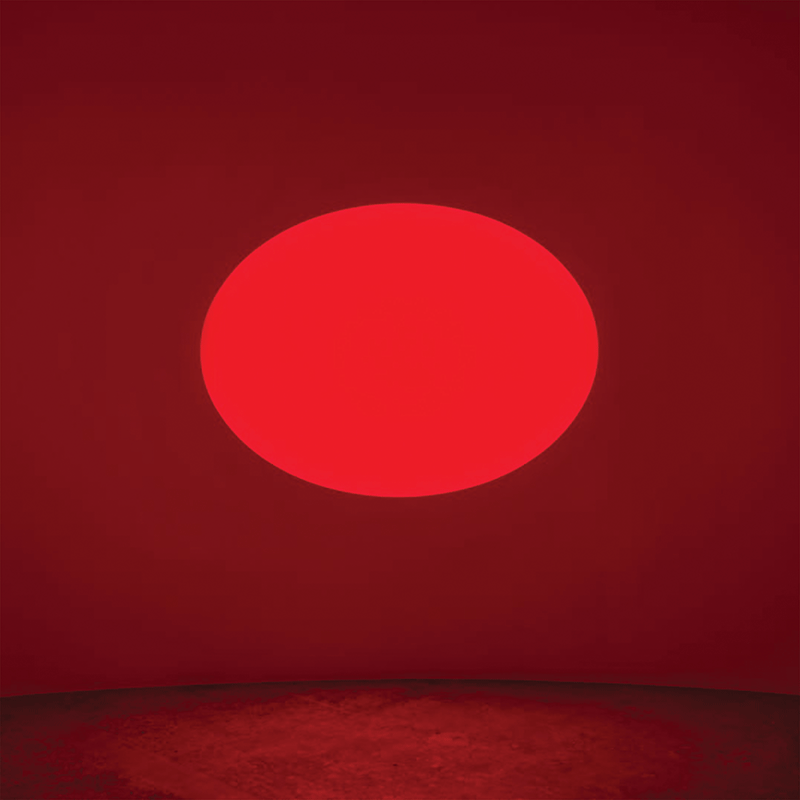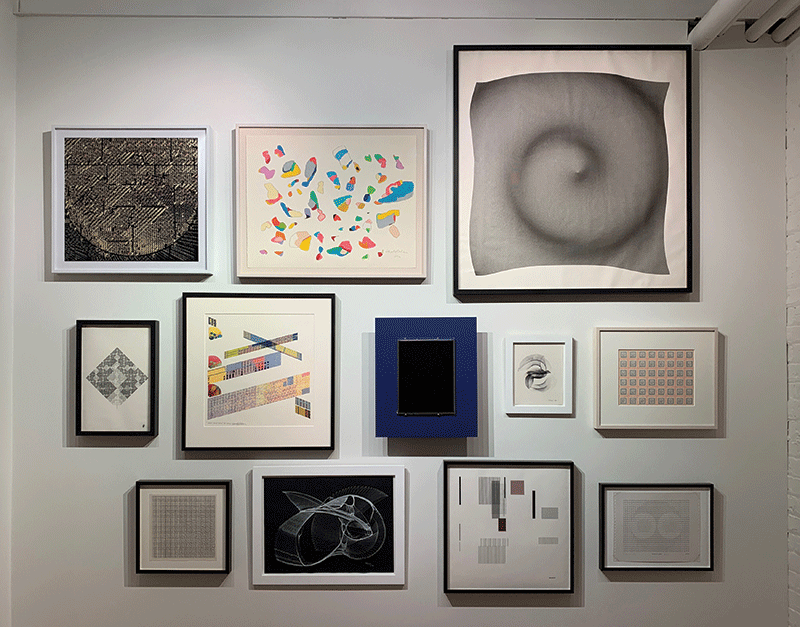Behind The Orange Door: The Thoma Art Foundation Builds a Collection to Share With the World


By ANNA DOBROWOLSKI
Tucked away in a warehouse in the heart of the West Loop, the Orange Door hosts a mélange of Japanese woven bamboo baskets, 17th century Spanish colonial art, a sonar-activated windmill and a mirrored infinity chamber. It can take some effort to gain access to an eclectic art collection in the best of times: like an art speakeasy, the Orange Door, an exhibition space operated by the Carl & Marilynn Thoma Art Foundation, is typically open to educational groups, curators, and art aficionados by appointment only. Luckily, in the middle of a pandemic, the barriers separating us from the collection just got lifted.
In early March I was able to connect with Marilynn and Carl Thoma to discuss how they first got into art collecting. Since graduating Stanford business school in the 70s, the duo has amassed over 1,400 works of art, making them a fashionable power couple for whom art is not just business but a lifestyle. Carl Thoma heads Thoma Bravo LLC, a private equity firm he cofounded in the 1980s; and Marilynn Thoma actively serves on the boards of the Chicago Shakespeare Theater, Chicago Humanities Festival, and the Art Institute of Chicago. Together in 2014 they established the Carl & Marilynn Thoma Art Foundation, which is dedicated to visual arts and philanthropic pursuits. Today they fund research into art scholarship, novel educational programs, and conservation.
Orange Door first opened in Chicago out of necessity, as the Thomas needed a home base from which to make art loans nationally and internationally. Currently, some of the art they have collected is on loan at the MCA, The Art Institute of Chicago, and the Museum of Contemporary Photography in Chicago, with another 17 across the Midwest. In Santa Fe, New Mexico, they also run a separate facility called Art House, which houses one of the largest digital collections open to the public year-round.
Each year the Thomas utilize Orange Door’s space to curate an exhibition featuring new Digital Art acquisitions and select artworks from across their collections. In September 2019 they hosted “Infinity Clock: Artworks on Time” and “The Algorists: Historic Computer Art.” The latter highlighted software-assisted work (namely, computer drawings on paper) created by artists such as Peter Beyls, Jean-Pierre Hébert, Manfred Mohr, Vera Molnar, Frieder Nake, Roman Verostko, Harold Cohen, and Mark Wilson. It is quite a treat to interact with these digital installations in person: however, when galleries are shut down to the public and exhibitions are either postponed or cancelled, we turn to our screens to access and engage their work.
How do we experience and collect art today? In this interview, the Thomas discuss their journey into the world of art collecting in the digital age.
Anna Dobrowolski: What set off the spark in 1975? What was the first piece that started the Thoma collection before it became a foundation in 2014?
Carl Thoma: Marilynn and I were both just out of graduate school when we began to collect art. Our interest was heavily centered around California Impressionism and the Taos Society of Artists, leading us to purchase paintings by artists including Redmond Granville, Joseph Henry Sharp, and E. Martin Hennings. Today we continue to collect artwork from across the American Southwest—both historic and contemporary.
AD: When you aren’t splitting time between Santa Fe and Chicago, do you have any favorite places or galleries you love to visit?
CT: It is hard to narrow down the list, but three art destinations we love to visit are Currents New Media festival in Santa Fe, Art Basel Miami, and the Prado Museum in Madrid.
AD: What do you look for when considering a work of art to add to your collection?
CT: At first it was a subjective decision—we buy what we like to look at. As we became more knowledgeable, we went deeper into a given period or movement and discovered ever more movements and artists. Because we make loans to museums, we also consider what a piece contributes to the history of art in general and how it might relate to other artworks.

AD: How has your taste changed or solidified over the years?
CT: We have always been decisive, and we have learned a great deal from a handful of seasoned advisors. Over the years, we have been increasingly drawn to works that embody color, strong compositional design, mastery of the medium, and historical importance. Through the Carl & Marilynn Thoma Art Foundation, we have also become increasingly dedicated to expanding scholarship and collection conservation.
AD: Can you tell us more about those initiatives and collections? How do they challenge or shape our perspectives?
CT: We support initiatives and collect works of art that encourage reflection, demonstrate innovation, and encourage deeper questions. For example, in 2019 the Foundation’s inaugural Bold Initiatives grant was given to the Museum of Contemporary Art Chicago to support their OPEN HOUSE initiative. They are taking bold steps to enable greater visitor engagement. This includes making the museum accessible to all facets of the community—not just those who live nearby, who have visited a museum before, or who feel comfortable in such a space. We are helping to fund an onsite educator whose job centers around visitors: understanding their needs, asking questions, helping them to grow and learn in a conducive environment. This commitment to making art more accessible is mirrored in our public exhibition space Art House in Santa Fe, which presents highlights from our collection of Digital Art to a community with deep and rich cultural and artistic histories. We aim to bridge the gap between something familiar, like landscape painting, and something new. And we encourage visitors to ask questions about the art and dive deeper into how these connections across time and place affect them.

AD: Many of the digital works in your collection incorporate some kind of interactive element. I’m intrigued by some featured pieces such as Rafael Lozano-Hemmer’s Please Empty Your Pockets, Jennifer Steinkamp’s Bouquet 1, Guillermo Galindo’s American Dream Flag / Bandera del sueño americano, or Lynn Harshman Leeson’s Deep Contact. In these examples the viewer is engaging with the subject through a screen, which seems to be one of our primary options when looking at art lately. What makes these installations significant today?
CT: These pieces are all very different, but what unites them is that each artist pursues an innovative technological idea to completion. In some of the examples you cite, the artists are at the forefront of digital art. Never before have such complex programmed works been viewable within art galleries. This represents a major shift in the experience of art, including interactivity.

AD: How does your digital and electronic art collection speak to the idea of art making in a time where everything seems so readily accessible? Can you talk a bit about the shift into collecting Digital and Electronic Art?
CT: My business is rooted in investing in new technologies, so collecting digital and electronic art came naturally. Our Digital Art collection mirrors my interest in systematic approaches, scientific thinking, innovation, entrepreneurship, and technology that shifts the trajectory of human experience. Over the years, I’ve found myself considering the role that new technologies play in the evolution of artistic creation and how the artworks we collect inspire an expansion in our understanding of media in contemporary culture.
AD: Which piece is your most recent addition? How does it connect to the others?
CT: Our most recent acquisition is James Turrell’s Ursa Minor, Medium Elliptical Glass from 2019. He is a key figure in the Light and Space movement. It never seemed practical to own one of his seminal works from the 1960s, which are complicated to re-create. The piece that we acquired uses LEDs with a computer program to simulate the effects of the artist’s enchanting Skyspaces.
Art Collecting: A Family Affair
AD: From your perspective, how has the practice of art collecting changed?
CT: Over the past five decades, collectors have seen an increase in the number of opportunities to purchase. Almost daily, we receive digital images of pieces that are on the market. This increase in opportunity to purchase is especially true with digital artwork, which, like prints, may come in multiple editions.
AD: According to a 2017 interview in Albuquerque Journal, your daughter, Margo, is an art professional. What have you learned from her in terms of art and business?
CT: Margo has taught us a great deal about modern and contemporary art and Japanese bamboo sculpture. She works closely with some of the foremost scholars and advisors in the field of Japanese bamboo, whose research has informed the scope and shape of our collection. As a gallery director, she has also provided a view into the inner workings of the art market.
AD: Do you notice a shift between people wanting to own art and people wanting to experience it? How do you think millennials and younger generations will go about art collecting?
CT: Yes—and this is due in part to the fact that it is not necessary to own a work of art to connect with it and explore it from the comfort of your home. While nothing compares to experiencing an artwork in person, it is easier than ever to research and access art through online sources. More artworks are available to be seen as pieces in museum storage become uploaded and shared.
Today, artistic masterpieces have the power to impact broad audiences: scholars advancing study of the field, casual observers perusing our collections online, emerging collectors looking for inspiration. Collecting art and sharing it with the world ensures its preservation for future generations to enjoy.







